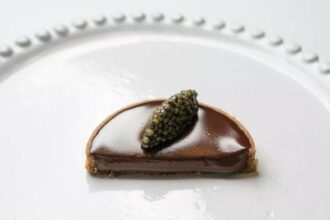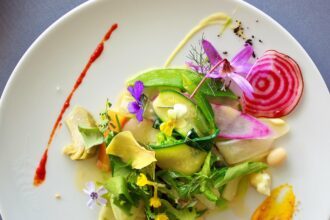For an explanation of our Madeleines series, see Gastromondiale’s Madeleines of 2017: Part I (Editors) here.
CAROLA SITJAS I BOSCH
La rissole feuilletée de tendre pigeonneau au foie gras doré et farce fine at Les Prés d’Eugénie of Michel Guérard (Eugénie-les-Bains, France)
The rissole feuilletée de tendre pigeonneau au foie gras doré et farce fine from Les Prés d’Eugénie of Michel Guérard (Eugénie-les-Bains, France) was excellent. Even though this celebrity pâtés chauds d’autrefois always liked me madly, I think there are few restaurant to eat them at. For this reason and with all the enthusiasm in the world, I ordered this dish from 1983 and drove 500 km to taste it. And the fact was that it met the expectations. I can’t imagine this dish executed in a better way. Globally, it had a wonderful depth of flavour; the sauce of the rissole and the creaminess of butter with the acidity of the vinegar of the side dish (the embeurrée de chou vert à la truffe) were perfectly balanced and were served with exquisite presentation. More specifically, the puff pastry was extremely delicious and the pigeon had the exact cooking point to be tender. I felt I was eating a dish with soul and not the result of an assembly line, as Vedat Milor describes. The rissole feuilletée is a sublime delight that 34 years later is still perfectly worthy of the best tables.
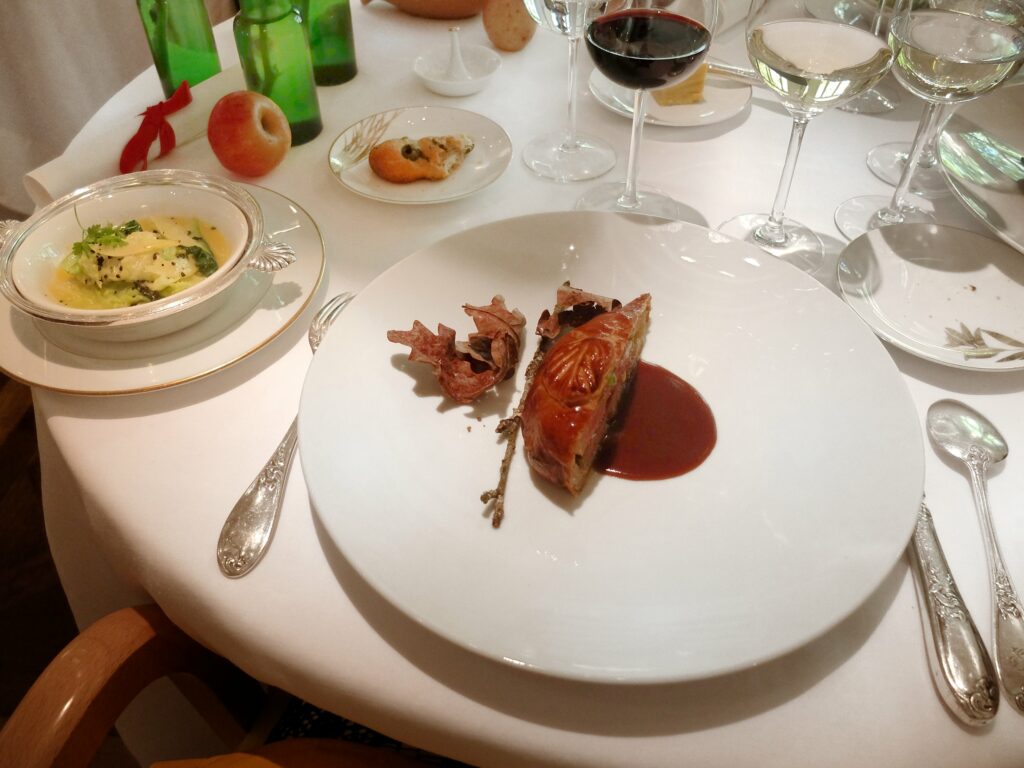
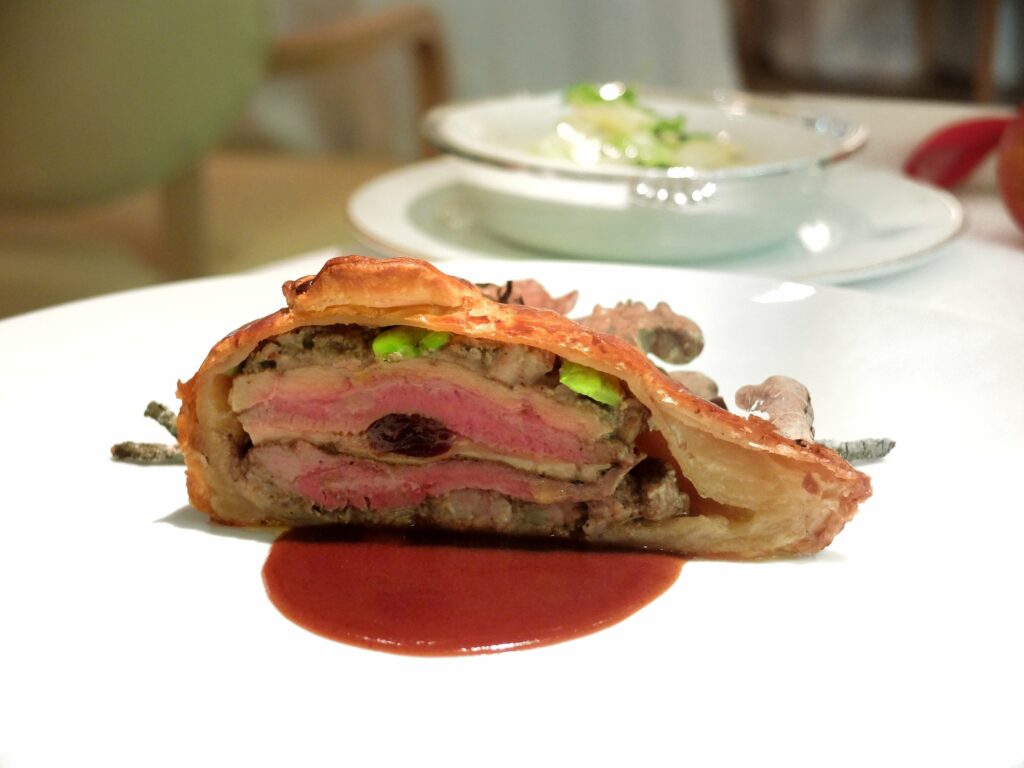
The steamed duck yolk custard bun at A. Wang of Andrew Wong (London, UK)
The chef Andrew Wong from London offers in its Chinese restaurant located outside Chinatown an incredible menu with the most variegated dim sum I have eaten outside of China but there was one that caught my attention above all the others. I’m talking about the steamed duck yolk custard bun that you can find on the dim sum menu but it is slightly a dessert. It simply consists in an attractive bun that apparently seems a delicate peach, with a stunning semi-liquid centre made with a duck yolk. It is very well balanced with the right amount of sweetness, with anything unnecessary and an incredible silky texture. It is an alluring bun because of the different taste it has, its finesse and the surprise component to eat something new for me for the first time. I think it is unusual to find that bun in Chinese restaurants and it demonstrates the richness of Chinese cuisine. It was certainly my favourite bun of the menu and, more and more, it just costs 4 pounds.
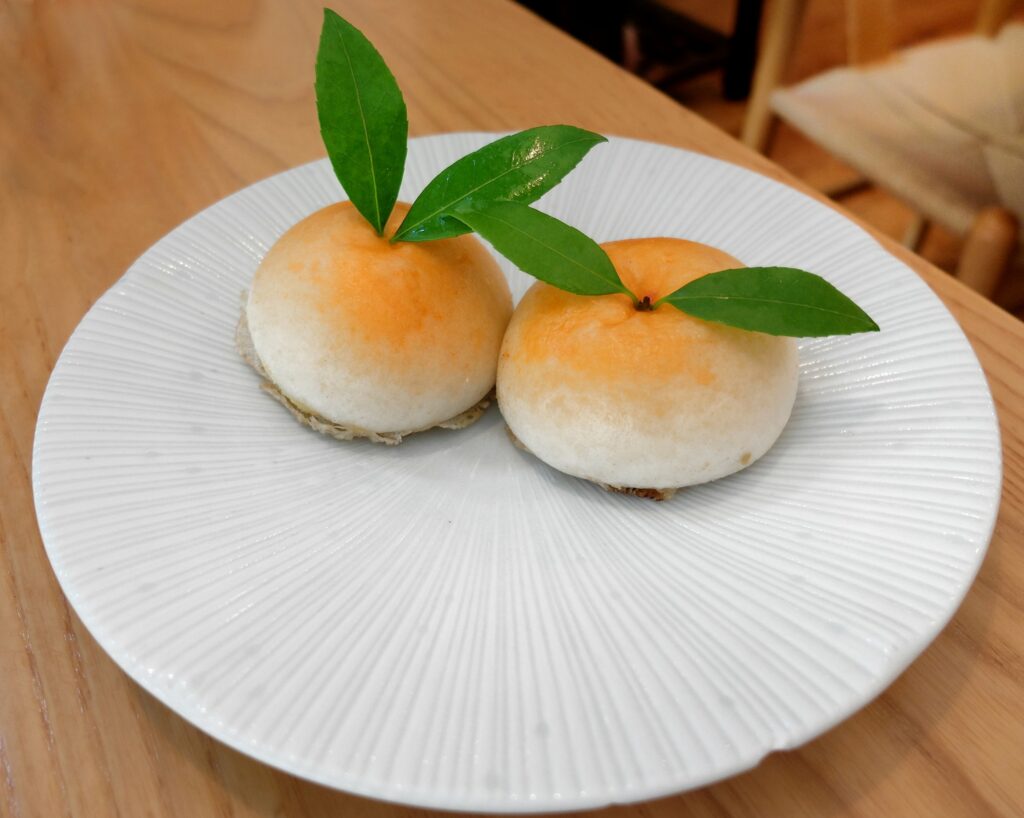
The bocatto di cardinale in two services at Alkimia of Jordi Vilà (Barcelona, Catalonia)
The bocatto di cardinale from Alkimia of Jordi Vilà (Barcelona, Catalonia) consists of two services. The first one is the tartare of scampi (escamarlà in Catalan), red prawn (gamba vermella) and gilt-head sea bream (orada) with a green sauce of plankton. The second, the bocatto di cardinale itself, is the grilled head of the prawn served inside the glass and crowned by a generous Beluga caviar spoon on the top. It must be taken by hands and suck. I found it a spectacular dish for the amazing quality of the fish, the cleanliness of taste and the mise en place (although the first impression when I saw the head of the prawn inside the glass it was not good at all). To arrive at that point of excellence where the cooking technique doesn’t mask the product, an outstanding level of technique is necessary and Jordi Vilà has it. The bocatto di cardinale demonstrates sensibility, subtlety and neatness at the time of cooking.
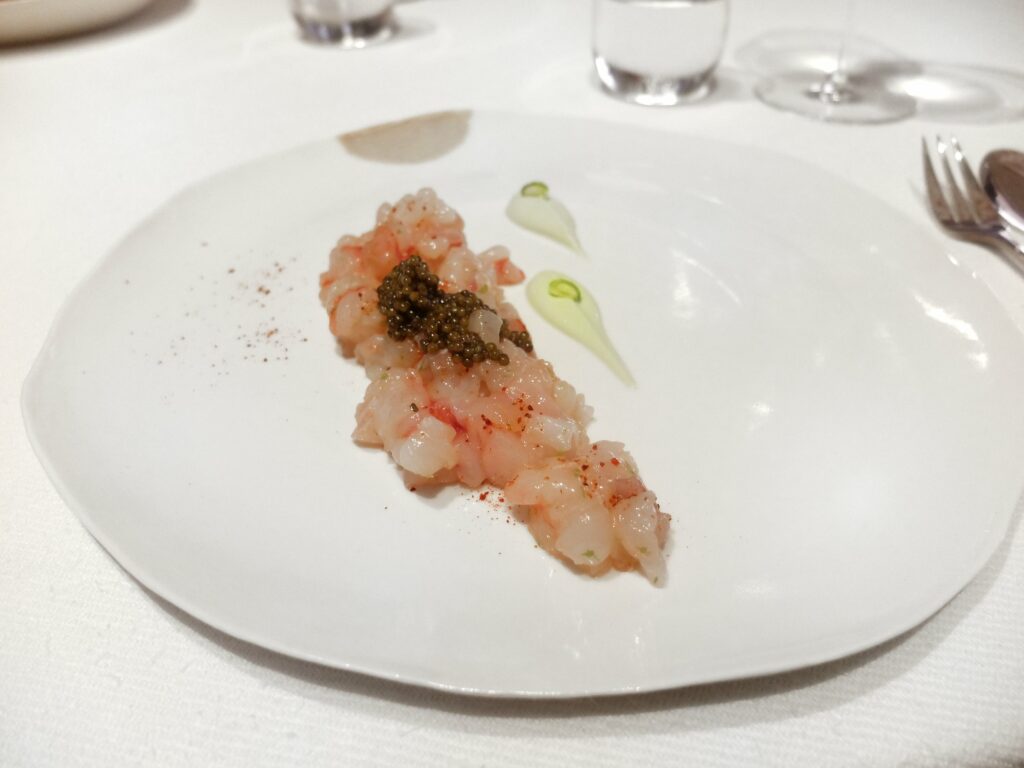
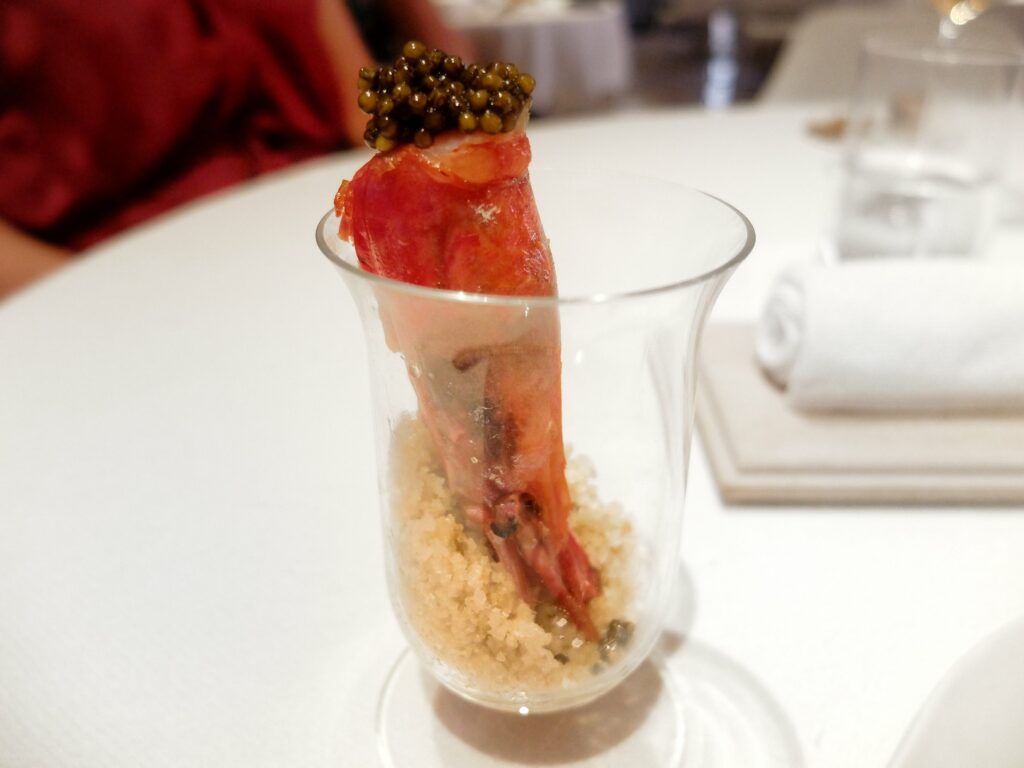
ROGELIO ENRIQUEZ
Blowfish Milt with snow crab and sticky crab sauce at Kagurazaka Ishikawa (Tokyo, Japan)
It is hard to mention a single dish when talking about Japanese kaiseki restaurants, as the menus are usually greater the sum of their parts and offer a progression. My meal at Ishikawa was not an exception to the rule and was even one of the most memorable of my life. But this single dish stood out above the rest, as it had all the ingredients I wanted in a dish. Beautifully presented in a delicate plate, the blowfish milt has creamy texture and the snow crab cooking was pristine. Both ingredients were combined with a sticky crab sauce.
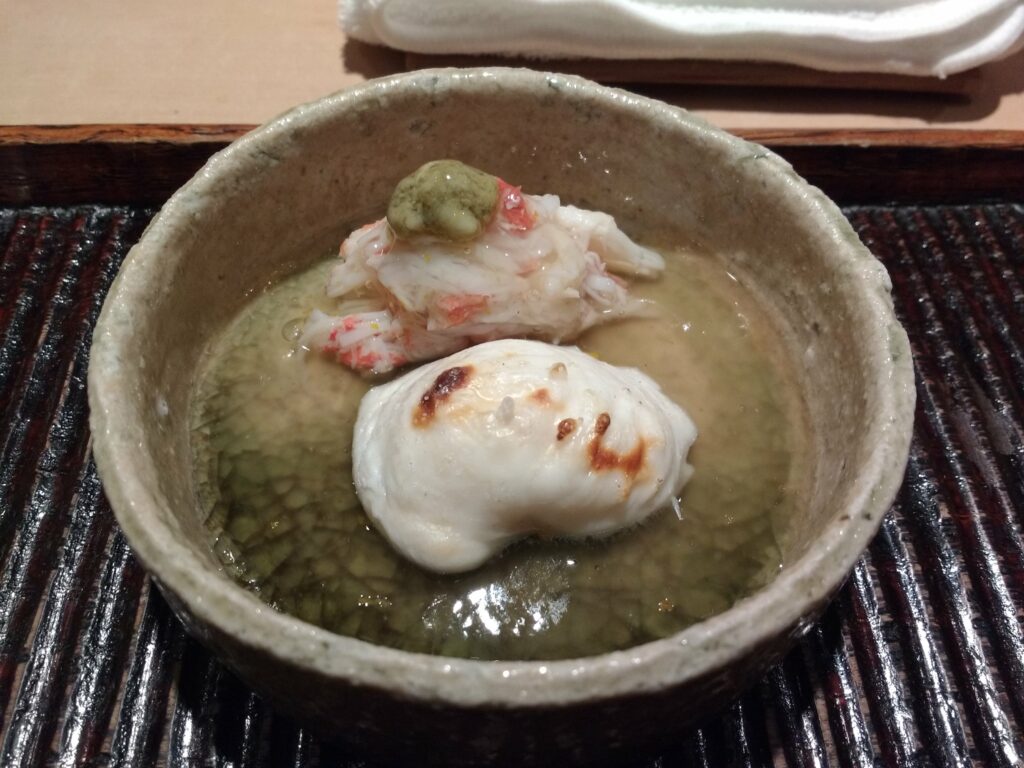
Roasted Besugo (Red Snapper) at Asador Etxebarri (Axpe, Spain)
Roasted Besugo is one of the most traditional dishes in basque gastronomy, especially in the Orio river region. At Etxebarri they only serve the ones caught by a single boat, guaranteeing more fat and flavor. These rounded fish leave the charcoal grill as they can get closer to the fire before the skin is burnt. Being cooked in its own juices, leaving a tender and laminated flesh. Then it is covered with a “refrito”. But here the “refrito” is lighter than the traditional oil, garlic and vinegar as there is no garlic and the vinegar is substituted by rhubarb water. The result is a juicy and tender fish served whole. Whole fishes are juicier and the meat shows more tension than portioned fishes. On the downside not all parts are cooked equally, but at Etxebarri the grilling skills of Bittor guarantees the success.
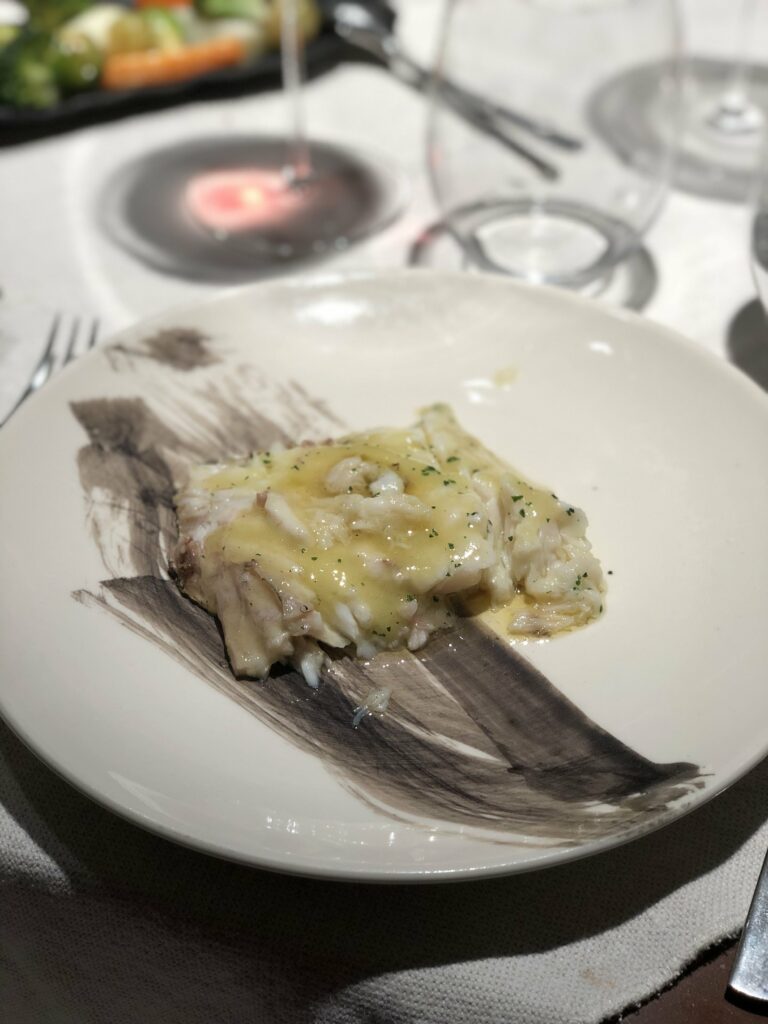
Lobster’s meuniere as a Cold Cappuccino at Ricard Camarena (Valencia, Spain)
Meunieres and hollandaise sauces are happily back in the modernist haute cuisine. Ricard Camarena is one of the most talented modern cooks in Spain Nowadays and along with David Muñoz and Nacho Manzano the only one I visit regularly. He has always been found of cappucino as a technique but this time he has served it as a cold “Meuniere Nantua” covering a piece of lobster placed over “croutons” and finished with pumpkin seeds.
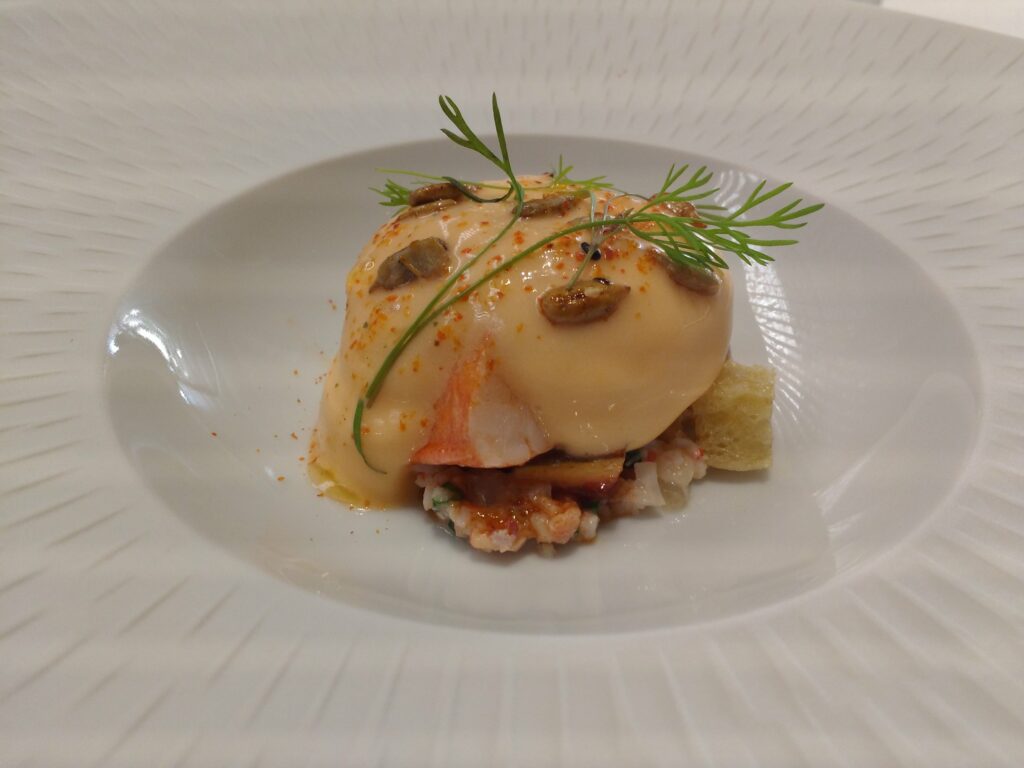
DAVID KATZ
Madeleines. I love the concept. To qualify as a Proustian madeleine, a dish ought to have a unique ineffable quality of smell or taste, evocative not necessarily of a specific childhood memory, but perhaps of a long-ago emotional state. For me, this rules out anything to be found on the menu of Michelin starred restaurants. I grew up in a Baltimore Jewish family. Prime hunting grounds for my madeleines therefore include delicatessens and Chesapeake Bay seafood dives, whose oysters and crabs are of course not kosher, but so delicious that even a wrathful Old Testament deity would understand and surely forgive our transgression.
Atman’s Delicatessen sits at the corner of Lombard St and Horseradish Lane. It is the hundred-year-old sole survivor of what used to be called Corned Beef Row before the Jews all moved out to the suburbs.

Atman’s pastrami rivals that of the New York temple of cured meat, Katz’s Delicatessen. The deliciousness comes from a combination of long brining in an optimal mixture of salt and spice, the selection of brisket marbled with the ideal amount of fat, and thick hand slicing. The rye bread has that paradoxical combination of moist softness and nutty chewiness. The mustard has just enough but not too much sharpness. The sour kraut must be homemade and must rely on naturally occurring microbes rather than added vinegar for its complex sourness.
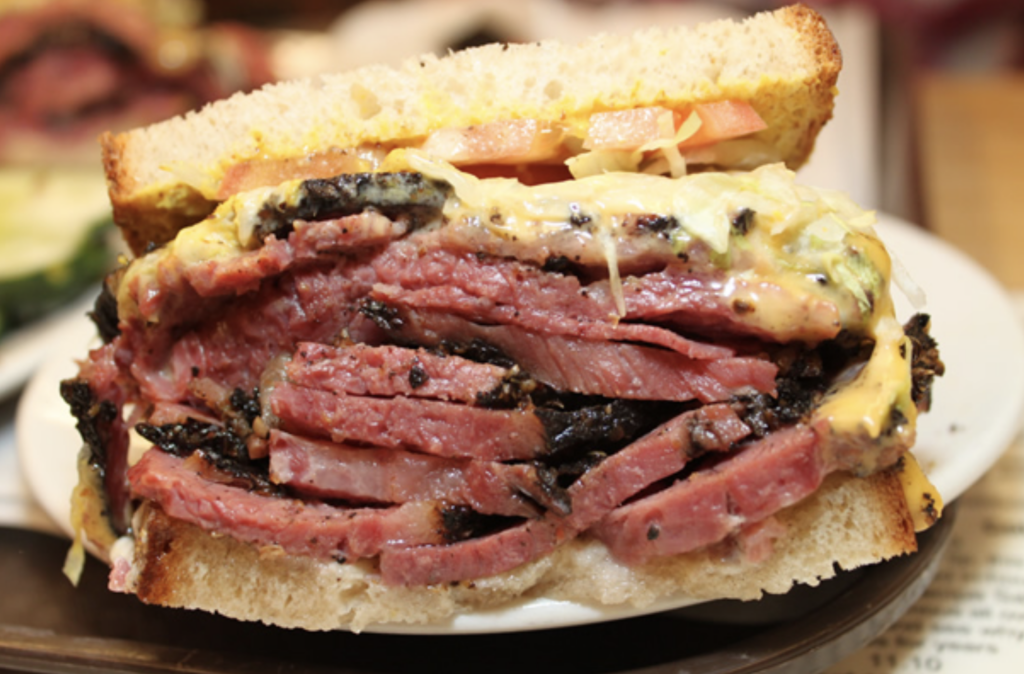
Another madeleine is the ideal accompaniment: matzo ball soup. I believe it’s the use of chicken schmaltz as shortening that gives their matzo balls that je ne sais quoi. The broth is reduced to the perfect viscosity and unadorned by any vegetables. The dish is about the essence of chicken.
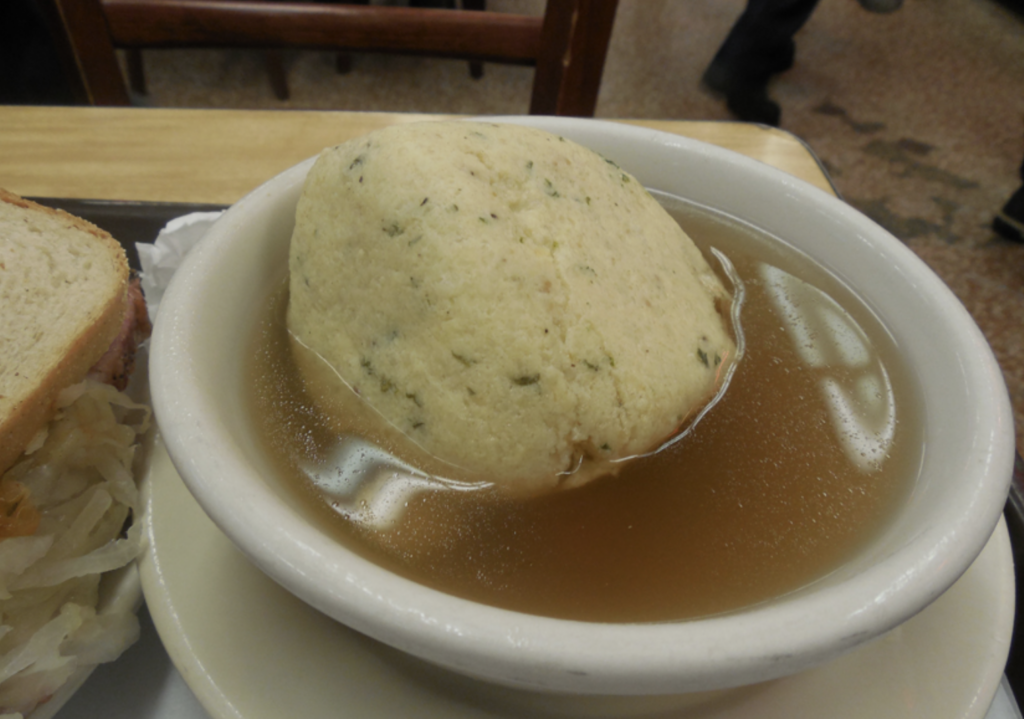
Atman’s displays its cash and carry items from ninety years ago.

if you’re up for a drive, I’d like to invite you to the Eastern Shore of the Chesapeake Bay, home to seafood shacks that serve the essential preparations of Maryland’s blue crabs.
Baltimore natives know that steamed crabs must be not just steamed but heavily seasoned with a mix of spices. The key ingredient is Old Bay Seasoning, but the better crab steamers augment it with their own secret blends. The crabs must be served on newspaper-covered tables. Wooden mallets and no other implements must be provided for opening the claws.
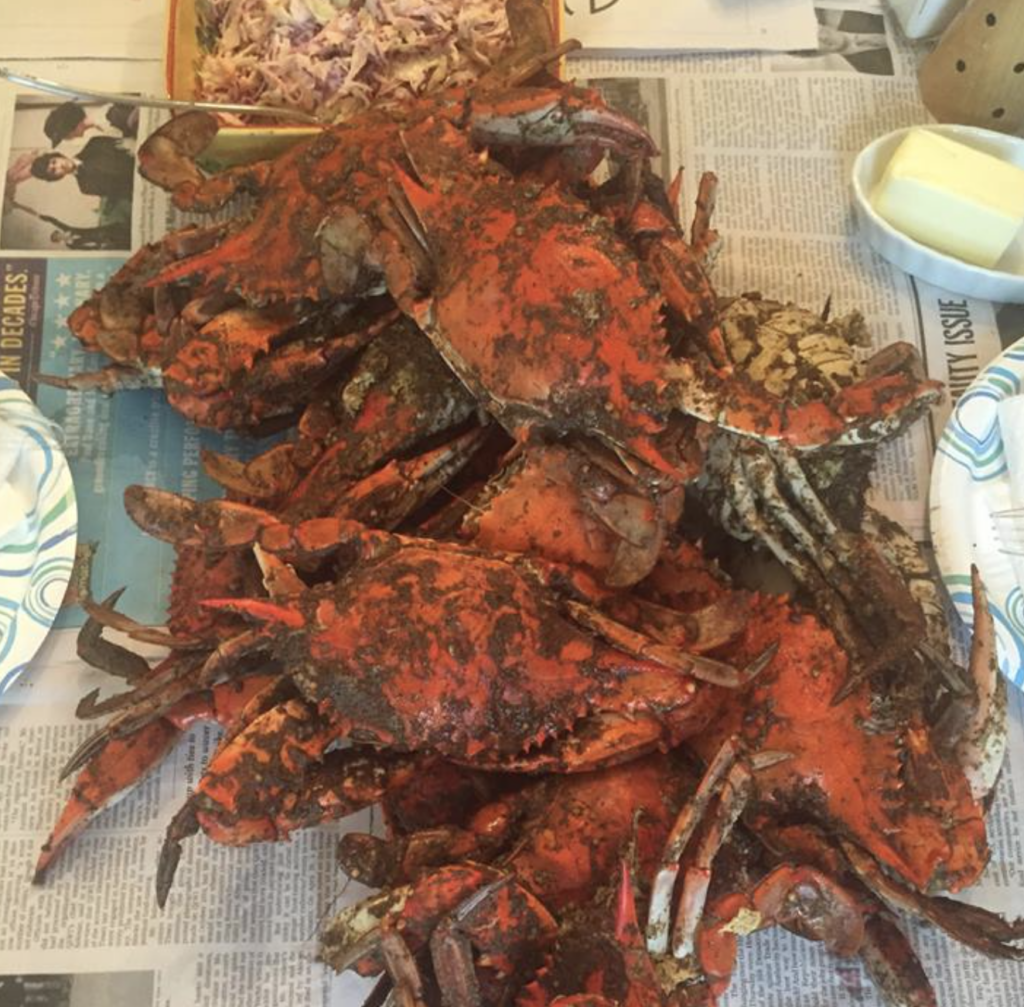
For those who want to avoid the chore of opening and picking through the shells, crab cakes provide the essence of seasoned crabbiness. I don’t know why these cannot be found in other cities. The key to a crab cake is its simplicity: big chunks of freshly steamed crab meat, plenty of peppery seasoning, and a bare minimum of bread and egg to bind it together.
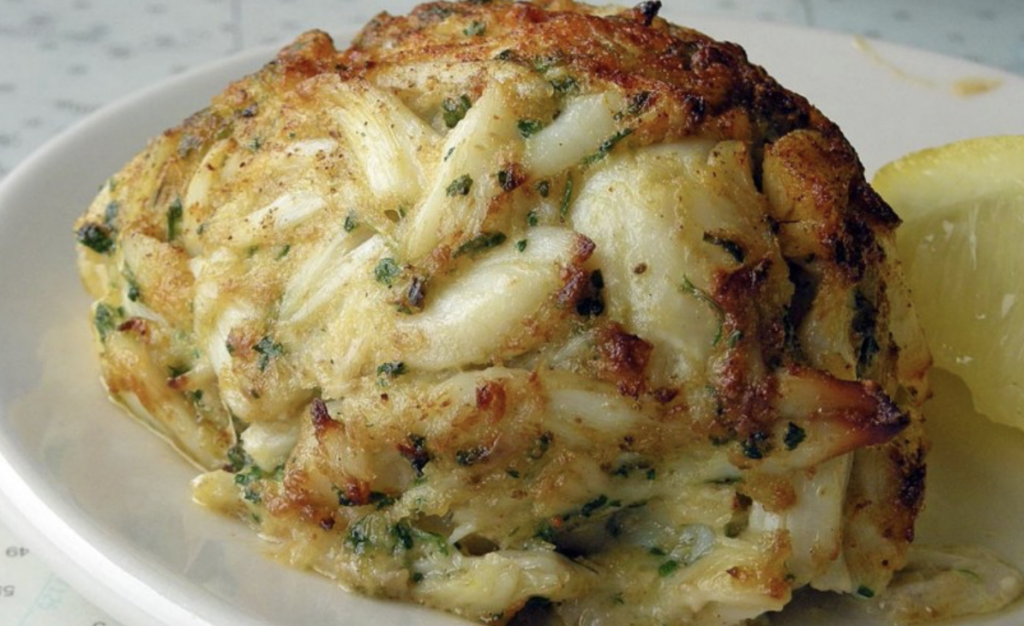
Oysters cannot be improved upon by cooking or seasoning of any kind. Even the most successful attempts amount to gilding the lily. The conditions in which oysters grow, however, are crucial. The best seem to come from water that is both clean and brackish, that is, of a salinity between that of ocean and fresh water. Most bodies of water with ideal salinity, the Chesapeake included, have succumbed to some degree of pollution. Recent efforts to clean up the bay have achieved some success, albeit incomplete. In an effort to avoid overharvesting of its oysters, Maryland has long restricted oystering to sailing vessels only. The Maryland oyster skipjack is one of the world’s last commercially viable sailing craft. I’m generally skeptical of governmental regulations that make the conduct of business difficult, but this one I love. I hope it is never repealed.

I cannot eat a Maryland oyster without recalling that it was harvested from a sailboat whose design hasn’t changed for over a hundred years. I also rarely eat oysters without remembering my horror at the first ones I had ever seen eaten, brought home in a brown paper bag and shucked by my father on our kitchen table.
Perhaps these factors entitle Maryland oysters to madeleine status, even though they are purely the work of nature and not of any chef.
As madeleines are sweets, I got to thinking of desserts I’ve had that were not just delicious and beautiful, but so uniquely evocative that they lingered in memory for years. I’ll share one that sits near—or maybe even at—the top of this rather small list.
I’m not sure why Les Prés d’Eugénie isn’t more discussed these days. Maybe it’s thought by some to be passé, Michel Guérard’s days of brilliant innovation being pretty far in the past.
One gets the feeling he doesn’t want to fix what isn’t broken. But to my taste, many of his dishes have lasted so long because they are incapable of being improved upon, not just by him but by anyone.
Once a few years ago we visited and were so taken by the dinner that we booked a room for three nights so we could have everything on the menu. Some dishes, although very much enjoyed at the time, have faded in memory, but one dessert I can still taste.
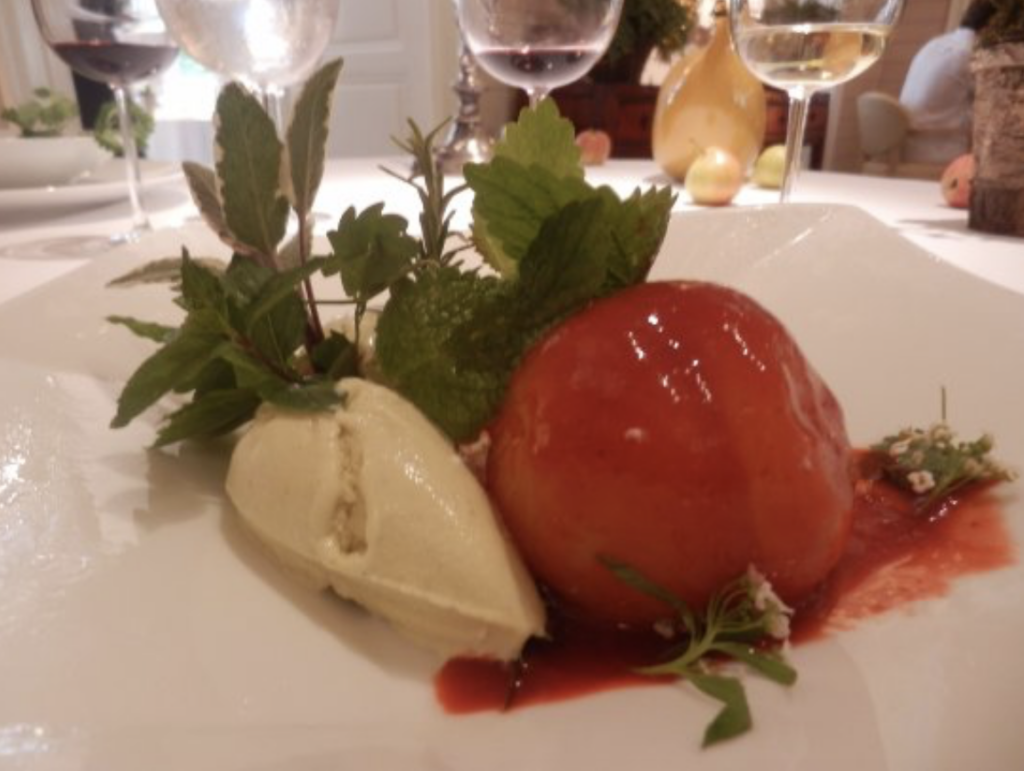
Like madeleines should, it impressed more by simplicity than complexity: a poached white peach, glazed with a raspberry coulis, served with a lemon verbena ice cream. Each of the three ingredients was perfect and sublime.
You know how good peaches can be, and how rarely you find one that hits the mark. Even good ones are often a little mealy, not quite sweet enough, or just lacking in peach flavor. This one was the ideal peach. Peaches in heaven must taste like this. The light poaching managed just to underscore its perfection. Raspberries, likewise, can be exquisite but so rarely are. This coulis was made of berries harvested at that moment when if any more ripe, they would be overripe. Its texture, of course, was as perfect as the berries had been. The ice cream too was perfect in mouth feel, richness, sweetness, and—most memorably—was deeply perfumed with the essence of that best of all lemon-scented herbs, lemon verbena.
The whole was more than the sum of those parts. It was a three note major chord, each note perfectly in tune, each fitting the other two with mathematical perfection. It alone would justify a trip to Eugénie-les-Bains. Now that I think of it, I want to go back.
ADLEY ZAYAN
Feuillantine de langoustines aux graines de sésame, sauce au curry at L’Ambroisie (Paris, France)
What can I say about this dish that has not already been said? It is the only dish that I have ordered on every visit to l’Ambroisie (besides the chocolate tart of course) and I never tire of it. It is always close to perfect, but for some reason on my dinner in late September, I found it extra special. The langoustines were large and of impeccable quality as always, cooked perhaps a fraction less than “usual” (as is to my taste) and the sauce, which is always a masterpiece, had an extra vibrancy. An otherworldly dish.
Scallops at Hedone (London, UK)
While I’ve enjoyed many superb dishes at Hedone over the years (and particularly in 2017), for me the scallop preparations are probably those that best exemplify why I love this restaurant so much. Sourced from the Isle of Mull, typically very large and always ultra fresh (i.e. alive), they are either cooked (these days steamed then lightly grilled) or raw and still pulsing. On the balance, I prefer them raw, but the cooking demonstrates real prowess. Either way, they are consistently firm and sweet. My favourite scallop preparations in 2017 were: cooked with scallop dashi and sea aster, raw with kaluga caviar and plankton sauce, and cooked with amontillado, pork fat and Alba truffle.
Mallard duck at CHIUnE (Tokyo, Japan)
This first of the season mallard (from Gifu prefecture) was, quite simply, the best duck I’ve ever had. Grilled rare and lightly smoked over the course of approximately 1 hour (if memory serves), and served with Nameko mushroom purée and a reduction of duck jus and 10-year aged red vinegar from Kyoto, its firm and meaty texture and complex taste was a revelation, with every element adding to the dish and pairing harmoniously the others, and the vinegar providing the requisite acidity. It’s hard to choose between the duck and the incredible grilled inoshishi (wild boar) at CHIUnE, but at the time of writing I will opt for the former.




